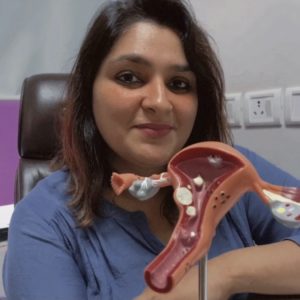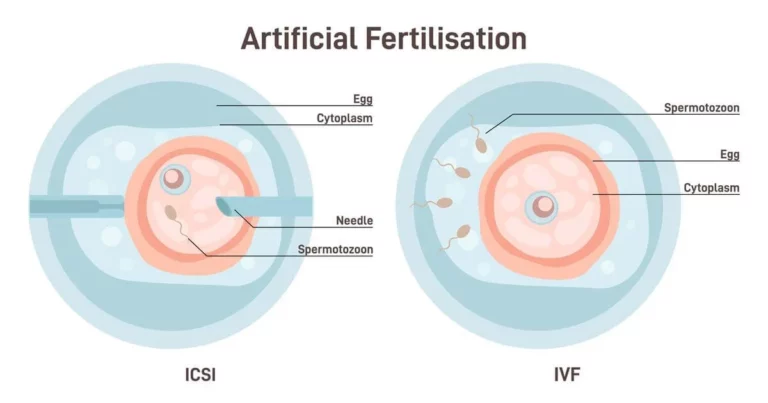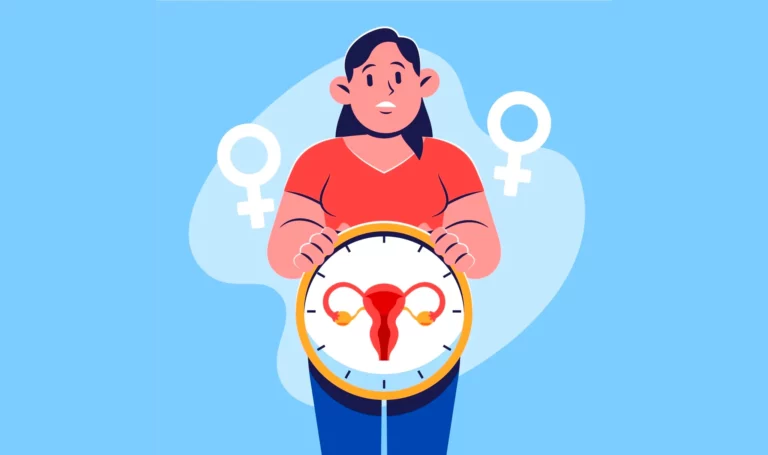Ovulation, a natural process in a woman’s body by which she typically releases one mature egg from one of her ovaries every month. However, in some cases, some women may even release two or more eggs during a single menstrual cycle. It is a phenomenon called hyperovulation. While it can occur naturally in some women, others may seek ways to improve their potential of doing so.
In this article, we will explore what this phenomenon is, the science behind it, how common it is, factors influencing its likelihood, associated risks and how to be able to release two or more eggs clinically and naturally.
What is Hyperovulation?
Let’s first understand what ovulation is. Ovulation is a phase during a woman’s 28-day menstrual cycle, typically occurring on or around day 14. It is a process in which one of the woman’s ovaries releases a mature egg (an ovum). The ovum then moves down the fallopian tube and is made available for fertilization.
On the other hand, hyperovulation, otherwise known as superovulation is a physiological phenomenon when a woman’s ovaries release multiple eggs during a single menstrual cycle. While typical menstruation involves maturation and release of a single egg from one of the ovaries, superovulation involves the simultaneous maturation and release of two or more mature eggs with one or both ovaries.
But, now the question is, what really is the science behind hyperovulation?
The Science Behind Releasing Multiple Eggs
The science of superovulation is simple. There is a hormone in females called follicle-stimulating hormone (FSH). This hormone plays the primary role in triggering the growth of ovarian follicles. These follicles are tiny sacs filled with fluid that contain undeveloped eggs.
At the beginning of a typical menstrual cycle, known as the follicular phase, the woman’s body starts to produce FSH which continues to surge. As a result, multiple eggs start growing within their follicles. But, as the follicular phase is around halfway, this FSH hormone starts to go down. As a result, only the most robust follicle survives and the other follicles die off. This dominant follicle then starts producing estrogen, signaling the body that it is ready to ovulate. The body then secretes luteinizing hormone (LH) which triggers ovulation and the ovary finally releases the egg.
However, in case of hyperovulation, there are more than one dominant follicle that survives and releases during ovulation.
How Common is Hyperovulation?
Though prevalence and frequency of releasing two or more eggs may vary, several case studies and research efforts provide valuable insights into its occurrence.
A 2003 study published in the Journal of Fertility and Sterility, revealed that out of 63 healthy and fertile women researchers were studying through regular ultrasound scans, had at least 2 waves of follicular development during each menstrual cycle. They also found that at the beginning of each menstrual cycle, 15 to 20 follicles were growing within the ovaries and about 40% of the women had clear biological potential to release more than one mature egg during ovulation.
Another 2016 study held by the University of California, Los Angeles, in a cohort of 500 women, approximately 15% showed signs of hyperovulation, characterized by two or more ovulatory cycles within a single menstrual cycle. It was also found that multiple ovulation was more common in women with shorter menstrual cycles and regular ovulatory pattern.
These studies clearly indicate that many women have the potential of producing two or more viable eggs during a single ovulatory cycle, naturally. However, their potential may be influenced by certain endogenous factors.
What Factors Increase The Odds of Hyperovulation?
Several factors contribute to increasing the likelihood of a woman hyperovulating and resulting in a multiple pregnancy. These include:
Genetics
Genetics have a dominant role in determining a woman’s reproductive health and ovulatory pattern. Women with a family history of having twins, especially on the maternal side reserve a higher chance of having a multiple pregnancy. If your grandmother or mother had twins, it is very likely that you may have twins as well.
Age
With aging, the likelihood of conceiving twins escalates significantly. Every woman is born with a definite number of eggs in their egg pool. And, women ovulate every month and the number of eggs continues to diminish, one by one. As this pool gets smaller, a woman’s body requires more FSH to stimulate follicular maturation. This rise in FSH levels may cause some women to ovulate multiple eggs.
Hormones
Certain reproductive conditions in women, such as polycystic ovary syndrome (PCOS) can disturb the normal hormonal balance for ovulation, often triggering irregular ovulatory patterns.
Height and Weight
Multiple studies have confirmed that women who are taller than 164 cm are about 2 times more likely to conceive twins. Also, women with a higher BMI (Body Mass Index) pose a higher likelihood of a multiple pregnancy due to hormone fluctuations.
How Do Multiple Pregnancies Occur?
There are only two ways, monozygotic and dizygotic pregnancy, one is completely random and another one is a result of superovulation.
Monozygotic or identical pregnancy is when the only fertilized egg splits into two separate embryos during the early embryonic development. Each embryo shares 100% of genetic material, making them identical. Placental development may vary; embryos may share the same placenta (monochorionic) or have separate placentas (dichorionic).
On the other hand, there is dizygotic or fraternal pregnancy, which is a result of a woman ovulating multiple eggs (hyperovulating). A different sperm cell fertilizes each egg. Embryos share only 50% of the genetic material, similar to any siblings. Placental development is typically similar; both embryos have their separate placenta.
How to Release Two Eggs During Ovulation?
The factors of superovulation we just discussed are typically uncontrollable. However, there are few reproductive clinical approaches proven to trigger the maturation and release of multiple eggs during ovulation. These include:
Fertility Drugs
Certain fertility drugs like clomiphene citrate and letrozole are typically administered to women during infertility treatments to stimulate ovaries to ovulate. These drugs work by encouraging the growth and release of multiple eggs from the ovaries during a single menstrual cycle.
Fertility Treatments
Intrauterine Insemination (IUI)
IUI is one of the first-line infertility treatments which involves placing sperm directly close to the woman’s fallopian tubes around the ovulation window. This procedure is typically combined with ovarian stimulation using fertility drugs to increase the number of eggs available for fertilization.
In-vitro Fertilization (IVF)
IVF is one the most common and effective fertility treatments. It is a complex process consisting of several steps, and one of these steps is ovarian hyperstimulation. Fertility drugs are administered at the beginning of the procedure, to cause the ovaries to release multiple eggs. Once these eggs release, the embryologist collects these eggs, fertilizes them by sperm in a laboratory and incubates them till the blastocyst stage. Then, the healthiest blastocyst is implanted around the woman’s uterine lining to establish a pregnancy. IVF is a complex and costly procedure. So, if you are considering it as a way, it is crucial to find the best IVF centre in Gurgaon to determine you receive the right treatment tailored for your needs.
Natural Ways to Promote Hyperovulation
Certain foods and lifestyle changes can influence your overall fertility and ovulatory pattern. However, they might not guarantee releasing two or more eggs during a single menstrual cycle, considering them may still improve your chances.
Following a Nutritious Diet
Adequate nutrition is crucial for optimal reproductive health. A diet rich in essential nutrients such as folic acid, iron, calcium and vitamin D can support healthy ovulation, potentially increasing your chances of superovulation. Include a variety of foods, vegetables, whole grains, lean proteins and dairy products to promote healthy conception.
Maintaining a Healthy Weight
Being either underweight or overweight, they both disturb a woman’s ovulatory function in different ways. Maintaining a healthy body weight through regular exercising and intaking a nutritious diet can regulate hormones and promote healthier ovulation.
Managing Stress
Hypothalamic pituitary ovarian axis (HPO axis) is a system in females that regulates their reproduction. And, chronic stress has been found to affect it and lead to irregular ovulation. By managing stress though techniques such as yoga, meditation, and deep-breathing can restore HPO axis and hormonal balance to facilitate a healthy ovulatory function.
Tracking Ovulation Cycles
Tracking menstrual cycles and determining your most fertile days (fertile window) through methods such as basal body temperature monitoring, cervical mucus observation, and ovulation predictor kits can help time intercourse effectively and maximize the chances of fertilizing multiple eggs.
Risks Involved of Hyperovulation
Though you may want to have twins, it is important to understand that it poses risks to the mother and the child too. These include:
Multiple Pregnancies
Though having twins may be desirable for many women, it does have its negative side too, for both mother and the newborn. Mother who has a multiple pregnancy has an increased risk of developing health conditions such as preeclampsia and gestational diabetes. Also, twin or triplet delivery often requires a C-section due to anatomical complications. On the other hand, the newborns in multiple pregnancies are often prematurely born (before 37 weeks) and have a low birth weight.
Postpartum Challenges
Postpartum challenges are likely for new parents. Taking care of multiple infants is demanding, both physically and emotionally. It may potentially cause stress and fatigue.
Conclusion
However it is a personal choice for a couple to conceive twins, they must also understand that it comes with several challenges, related to health and physical and emotional efforts. Couples based on their medical history may be advised to conceive twins or not. If you want twins, it is essential to first prioritize overall health and consult with a fertility specialist to be aware of the potential risks and ensure a safe and healthy pregnancy journey.








